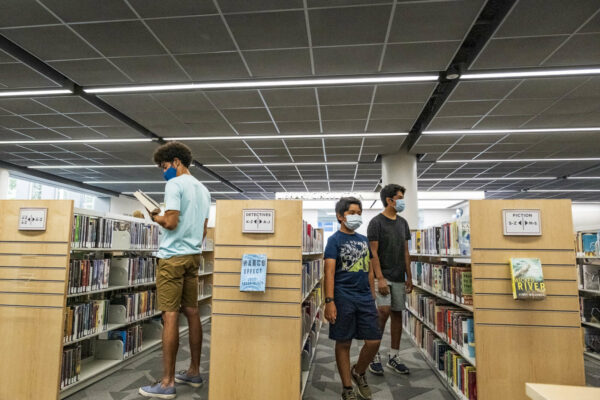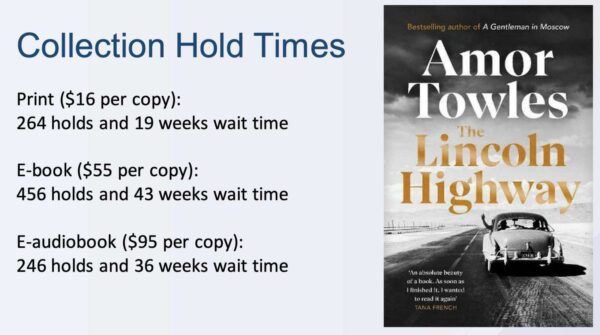
(Updated at 10:35 a.m.) Arlington’s public libraries are trying to figure out how to get patrons back after Covid closures.
Since starting to reopen in mid-2021, library use has been down more than 25% from pre-pandemic levels, the Sun Gazette reports.
In a budget presentation with County Board members, longtime library director Diane Kresh acknowledged that the 75,000 users of her system in the days before COVID had dwindled to 55,000 today. (She didn’t do the math for board members, but it represents a drop of roughly 26.5 percent.)
“We want those people back. We’ve got to bring them back,” said Kresh, on hand to push for a library-system budget increase of 6 percent to $15.9 million and a staffing increase to about 140 full-time-equivalent positions from 131.
Meanwhile, while printed material remains the centerpiece of local libraries, digital rentals are quickly catching up. Kresh’s budget presentation cited the following national figures.
In 2009, non-digital materials made up 98% of a library’s collection. In 2019, that number was 45%.
In 2019, use of digital collections is at an all-time high of 37% of all collection use. This is triple what it was in 2013.
But in terms of borrowing, more physical books are borrowed than digital ones, with roughly 5.6 physical books borrowed per person per year and 3.5 digital.
The presentation noted that hold times in Arlington are long for popular material, like the novel The Lincoln Highway. Digital holds — e-books and e-audiobooks — are roughly twice as long as that for print, the presentation said, with 702 holds for the digital versions compared to 264 for print.

Arlington’s public library system, like others across the country, has been evolving its offerings, adding digital material rentals, holding various events and children’s activities, opening makerspaces, providing free meeting space rentals, and offering free Wi-Fi — indoors and outdoors — in addition to computer rentals.
A library is very much a public space: a place to meet up, study, research, create things, and participate in community activities.
Ultimately, though, much of the library system’s physical footprint and operational focus remains devoted to printed materials, at a time when you can read many books instantly on a screen and complete research projects entirely online.
There’s nostalgia for the democratization of knowledge unlocked by the Gilded Age rise of public libraries in the U.S., and print materials are still undoubtedly popular, but there is an argument to be made that libraries could serve more people by repurposing some space for more computers, kids activities and other public functions.
On the other hand, fewer physical books on the shelves could backfire and turn off some devoted patrons while failing to attract marginally higher numbers of new patrons.
What do you think? Should Arlington Public Library should consider gradually de-prioritizing print and using the space for other community uses?

